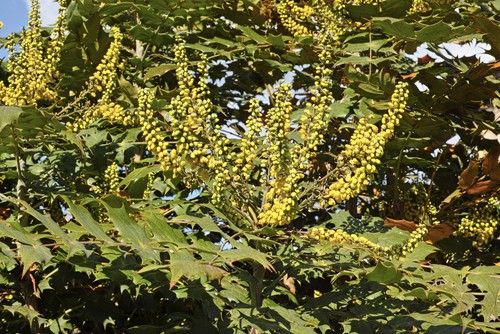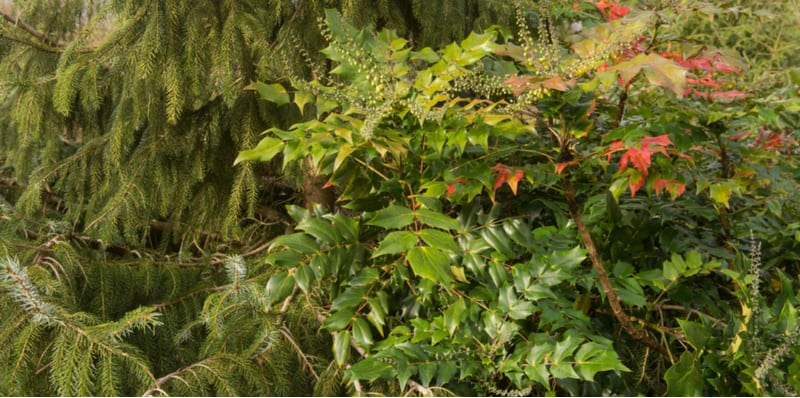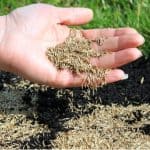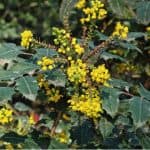Last updated on April 27th, 2022
Our site is reader supported, this means we may earn a small commission from Amazon and other affiliates when you buy through links on our site.
The Mahonia japonica prefers shade because it naturally grows in a woodland setting, but it will grow just as well in a semi-shaded location. Once fully established it can reach a height of around 200cm and a wider spread of around 400cm, so it eventually makes quite a large evergreen shrub, providing plenty of interest in terms of colour all year round.
These are typically grown because of the dark green foliage along the bottom of the plant that is comprised of 5 to 20 leaflets depending on how old your plant is. But come winter is when it really shines because the leaves take on a reddish-purple hue and then give way to the large, long stocks of bright yellow flowers. These stunning flowers are what they are best known for, and what a magical display they make when not much else is flowering.
They are perfect for providing colour from late autumn to early spring
The scent is similar to that of the Lily of the Valley. The bright yellow flowers come out of the ends of the leaves, however, if you have a smaller plant that you’re growing in pots they might shoot directly out of the centre and they usually start flowering from late autumn through to early spring. After flowering, they give way to equally attractive purple fruit.
Allow ample space when planting
The Mahonia japonica is considered the smaller of the media varieties and yet even in its smaller size it still grows quite large (as already mentioned), eventually reaching approximately 2 metres tall by nearly twice as wide.
The plant is very hardy and will grow in almost any soil including moist soil, dry soil, sand soil, or heavy clay. However, it is recommended that you grow it in well-draining soil no matter what the conditions might be.

How to plant a Mahonia
If you have purchased yourself a Mahonia japonica and want to plant it in your garden it is recommended that you prepare the site beforehand by mixing in bone meal or fish blood and bone into the soil to help encourage the root growth. Soak the roots in water for at least 20 minutes in a bucket of water before planting so that they do not dry out.
They are very hardy but are best protected from cold drying winds because it damages the foliage and flower buds
Mahonias do well in woodland areas and will survive in shade as long as they are protected from the cold winter wind. They work very well as a screen because of their tall and bushy nature. The leaves have sharp spikes on them as well, perfect for inhibiting intruders.
Mulch around the base of plants
As previously mentioned, Mahonias are very strong shrubs, however, you can help them out here and there by adding mulch around the base to protect the roots, especially if you live in a very cold area with harsh winter weather. If you have recently pruned your Mahonia you should always add some mulch to help it recover and retain moisture.
Pests and Diseases
Mahonias do not suffer from many issues but rust and powdery mildew can become a problem. These diseases aren’t really a huge issue, are easily treatable and rarely lead to the plant dying.
Thankfully you can easily identify the signs of these fungus issues as soon as they arise and treat them with a fungicide.
Pruning Mahonia

It is best to avoid regular pruning with a Mahonia japonica but you can prune to remove dead, damaged, or diseased growth at any point. You can also prune them to maintain the size of the plant and the shape you desire. After you have pruned your Mahonia we recommend applying some slow-release fertiliser and mulching around the base of the plant.
If you are going to prune them it’s recommended that you do so in the spring, relatively early after it has finished flowering, however, if you have a dead or diseased branch you can remove these immediately, as soon as you notice them.


